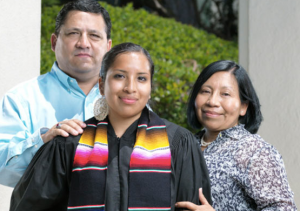LatinaLista — Charter schools have long been seen by communities of color as the only viable options to a failing public school system. A Stanford University report published in January 2013 found that impoverished black and Latino students especially had stronger learning gains when enrolled in charter schools.

Unfortunately, as the same report points out, not all charter schools are created equally. Yet, there is one national charter school chain that has garnered the distinction of actually closing the achievement gap for disadvantaged students.
Known as KIPP, an acronym for Knowledge is Power Program, the charter school has a reputation for having high expectations of its students. Started in 1995 as a middle school program, KIPP has since expanded to elementary and high schools. As of the 2012-13 school year, 125 KIPP schools are operating in 20 states and the District of Columbia.
A new report by Mathematica Policy Research analyzing KIPP’s results shows just how effective KIPP’s teaching strategy is with its students.
KIPP’s gains are not the result of “teaching to the test.” For KIPP students in the lottery sample, researchers administered the TerraNova test — a nationally norm-referenced test — which students had not prepared for, and which carried no consequences for students or schools. The impacts shown in the Terra Nova test were consistent with those shown in state tests.
The results published in this report, which is part of a multi-year study of KIPP middle schools, is significant when two important findings are combined: Ninety-six percent of KIPP students are either black or Hispanic, with 83 percent eligible for free or reduced-price school meals; and KIPP schools produced achievement gains large enough to have a substantial impact on student outcomes.
For this many low-income, and what many in the public school system routinely characterize as low-achieving students, to make the kind of strides as they do at KIPP means that this charter school system is doing something that public schools need to emulate.
KIPP has obviously struck on a formula for success that includes such essential elements as: having high expectations of the students; ensuring that parents and students commit to doing the work and being involved in the school, along with, combining academics with putting into practice actions that build good character.
Enrollment in a KIPP school is demanding on both child and parents and that pressure is reflected in the report:
However, the findings suggest that enrollment in a KIPP school leads to an increase in the likelihood that students report engaging in undesirable behavior such as lying to or arguing with parents.
While not ‘desirable’ behavior, it’s normal behavior and a good sign that parents are holding kids accountable for their schoolwork and behavior and kids are developing enough of a conscience to know the only way to avoid responsibility is by lying or arguing.
Yet, with the report declaring that “KIPP is among the highest-performing charter networks in the country,” it’s safe to assume that after experiencing some growing pains, kids get back on track and fulfill the charter school’s mission of making students successful and college-ready.
The report’s authors were impressed by their findings and since the study is on-going, have plans to conduct more research in identifying “exactly what makes each KIPP school more or less successful than its peers.”


